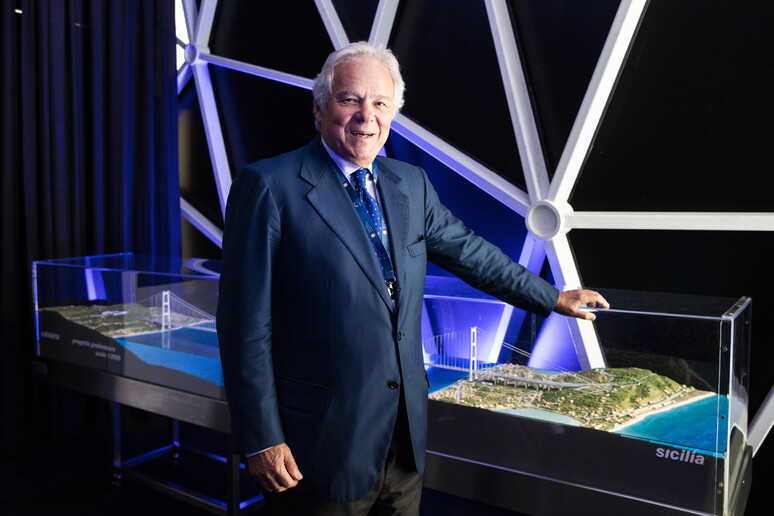The planned suspension bridge across
the Strait of Messina linking the island region of Sicily to
mainland Italy in Calabria would withstand an earthquake greater
than the one that flattened Messina and the surrounding area in
1908, Webuild CEO Pietro Salini said on Friday.
"Suspension bridges are by definition more resistant to
earthquakes than any other structure precisely because of the
way they are built," Salini told ReStart on Rai 3.
"If an earthquake like the one in Messina in the early 1900s
were to occur today, a large part of the buildings there would
collapse, but the bridge would remain standing," he added.
"If there were to be a larger earthquake, only the bridge would
remain standing."
On December 28, 1908 an earthquake measuring 7.5 on today's
Richter scale hit Sicily and Calabria with the epicentre in the
Strait of Messina.
The tremor and subsequent tsunami caused massive damage and
killed up to 82,000 people.
The CEO of the engineering group that leads the Eurolink
consortium that won the tender to build the bridge also said it
has been designed "to withstand wind gusts of up to 300 km/h,
while the maximum recorded in the last 100 years is 100 km/h for
a short period".
Salini's comments came after opposition lawmakers raised doubts
about the safety of the bridge during a recent question time
with Transport and
Infrastructure Minister Matteo Salvini.
unscrupulous," Bonelli told Salvini.
The government of Premier Giorgia Meloni has revived the project
to build what would be the world's longest suspension bridge,
which had been long delayed due to funding issues as well as
fears of mafia infiltration and graft, and seismic and
environmental concerns.
The CEO of the Messina Strait Company, Pietro Ciucci, said last
month that work may start this summer.
ALL RIGHTS RESERVED © Copyright ANSA











